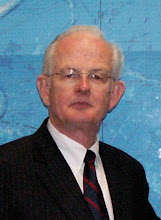As we mortals contemplate our past in light of God’s revelations since the days of Adam, we come to understand that we have experienced two births in our material development. As offspring of our heavenly parents, our uncreated intelligence was clothed with a spirit body, and we commenced a great and critical period of learning and development in those heavenly realms. At the time of this birth, we were all innocent of any wrong doing. However, with time the experiences that shaped our development in the pre-mortal existence necessarily provided us with opportunities to exercise agency and to choose between good and evil as well as to take advantage of many opportunities to demonstrate our faith in God. By the time we were prepared to come to earth, we were no longer innocent. However, an innocent beginning in mortality was required for God’s spirit children under the terms of His plan of salvation. Therefore, the atonement of Jesus Christ necessarily had to reach back in time to pay the price for our contrary behavior in the pre-mortal world. By this means, it was possible for us subsequently to be born a second time in innocence. On these points, the scriptures are very clear.
In the Prophet Mormon’s powerful writing in opposition to the practice of infant baptism, we read, “But little children are alive in Christ, even from the foundation of the world; if not so, God is a partial God, and also a changeable God, and a respecter to persons; for how many little children have died without baptism!” (Moroni 8:12) How could he have expressed this truth with anymore clarity? Through Christ’s atonement, we all enter this world innocent having been freed of our responsibility for our wrong doings even before the earth was created.
In September 1830, the Lord revealed confirmation of this truth to the Prophet Joseph Smith. “But behold, I say unto you, that little children are redeemed from the foundation of the world through mine Only Begotten; Wherefore, they cannot sin, for power is not given unto Satan to tempt little children, until they begin to become accountable before me” (D&C 29:46-47). And again in 1833, the Lord revealed that “Every spirit of man was innocent in the beginning; and God having redeemed man from the fall, men became again, in their infant state, innocent before God” (D&C 93:38). Man again became innocent. So it is, we have been born twice in innocence.
Class discussions on this topic often include a question as to whether a child is even capable of committing an act that if committed by one who is accountable would be deemed a sin. Actually, the question is without importance. From a vision that the Prophet received in the Kirtland Temple in 1836, we have reaffirmed the promise that children are not held accountable for any acts they may commit whether or not the actions would otherwise be deemed sinful. “And I also beheld that all children who die before they arrive at the years of accountability are saved in the celestial kingdom of heaven” (D&C 137:10).
So was it possible for us as the spirit offspring of our heavenly parents to choose evil as opposed to good and also to demonstrate acts of faith in the pre-mortal world? Absolutely. Please consider the first nine verses of chapter thirteen in the Book of Alma. In his discourse on the eternal role of the Melchizedek Priesthood and the calling of High Priests who administer to the inhabitants of this world, the Prophet Alma confirms that all of us were born into the realm of our heavenly parents, our first estate, with equal standing one to another. “Or in fine, in the first place they were on the same standing with their brethren; thus this holy calling being prepared from the foundation of the world for such as would not harden their hearts, . . .” (Alma 13:5).
Although we all started with the same standing, our probation in the spirit world would distinguish between those who would be obedient and excel and those who demonstrated lesser faith and thereby make less of themselves in their first estate. From the faithful, the Prophet Joseph Smith taught, God called and ordained His servants who would serve Him during the time of our mortal probation, or second estate. “Every man who has a calling to minister to the inhabitants of the world was ordained to that very purpose in the Grand Council of heaven before this world was” (Teachings of the Prophet Joseph Smith, 365). On this point, Alma gives us considerable insight. Speaking of the process that took place in the pre-mortal existence whereby the high priests who would serve in this world were called, Alma taught, “And this is the manner after which they were ordained--being called and prepared from the foundation of the world according to the foreknowledge of God, on account of their exceeding faith and good works; in the first place [our first estate] being left to choose good or evil; therefore they having chosen good, and exercising exceedingly great faith, are called with a holy calling, yea, with that holy calling which was prepared with, and according to, a preparatory redemption for such” (Alma 13:3).
Our Father in Heaven knows us personally, and those of us who exercise the Melchizedek Priesthood in the interest of the growth and strengthening of the Kingdom of God on the earth today were chosen for this work before we were sent to earth. Once we have knowledge of this fact in addition to an understanding our Father’s plan for His spirit children, how can we do otherwise than to be faithful and diligent in all that pertains to the purpose of our being in these blessed mortal circumstances?
